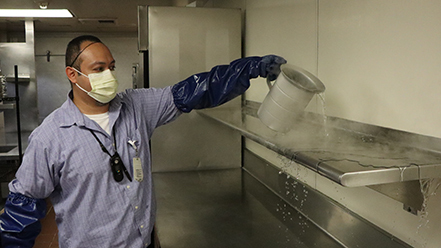A Sweet Passover at Los Angeles Jewish Health

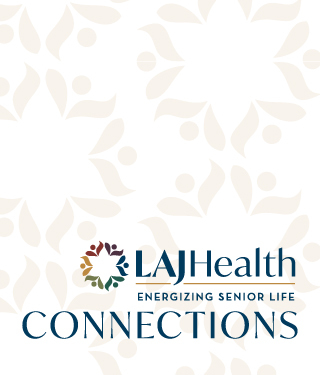
A Ziesen Pesach (a Sweet Passover) at Los Angeles Jewish Health!
Passover is a time for celebration around the world as Jews mark the liberation of their ancestors from Egyptian slavery. This year, across the campuses of LAJH, residents joined together with visitors, family, and staff enjoying delicious food, inspirational music, and the ritual retelling of the biblical Exodus.
On the Grancell Village campus, residents of the Joyce Eisenberg-Keefer (JEK) Medical Center and the Mark Taper Building gathered for the campus’ annual seder, generously sponsored by philanthropist Joyce Eisenberg-Keefer. Led by LAJH Chief Mission Officer Rabbi Karen Bender, the seder featured musicians Cindy Paley and David Kaminer, as well as a surprise appearance by “Moses” carrying a baby sheep residents could pet and cuddle.
“The reputation of our seder is that it’s special and spectacular, and we’re incredibly grateful to Ms. Eisenberg-Keefer for making it possible every year,” says Ilana Springer, JEK’s CEO and administrator. “It’s so joyful and is a fantastic community-building experience. This year, we hosted at least 200 people!”
Additionally, members of JEK’s Drama Club put on a production of the Passover story; residents ran auditions, acted in, and produced the play, which was a huge hit with all in attendance.
The Eisenberg Village campus played host to four seders, two for residents of the Newman Building and two more for residents of LAJH’s Fountainview community. On hand to officiate were Rabbi Bender and Rabbi Barry Lutz.
“At each event, residents sat together at communal tables decorated with beautiful linens and flower arrangements, and everyone received their own seder plate,” says Annette Weinberg, campus lifestyle and enrichment director for Eisenberg Village. “The seders were truly lovely, and our residents were excited to participate!”
Coinciding with the holiday, all Eisenberg Village residents were invited to attend a dynamic Israeli dance performance as well as a traditional Moroccan Jewish celebration of Mimouna (meaning “faith”), a time when families traditionally open their homes to guests and serve an assortment of sweets as they wish each other “success” for the coming year.
It was a busy holiday at LAJH—and a wonderful way to usher in a gorgeous spring season!
Large crowds atttended Grancell Village's celebration, which included music by Cindy Paley and a visit from "Moses" holding a gentle lamb. Donor (and former board member) Joyce Eisenberg-Keefer and board member Nicholas Thacker were also in attendance, demonstrating their continued support
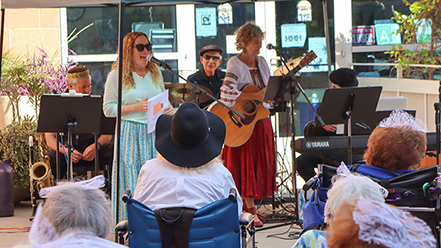
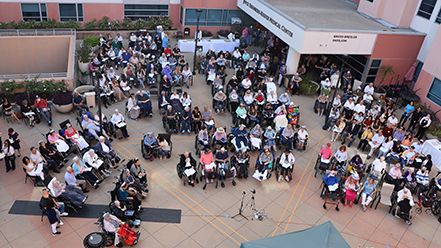
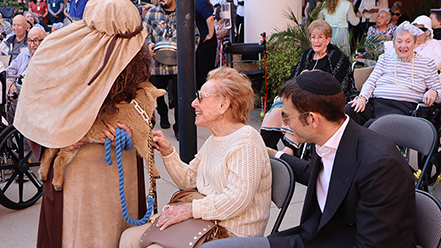
Fountainview residents and guests enjoyed two meaningful Seders led by Rabbi Barry Lutz and Chief Mission Officer, Rabbi Karen Bender, as well as a traditional Moroccan Jewish celebration
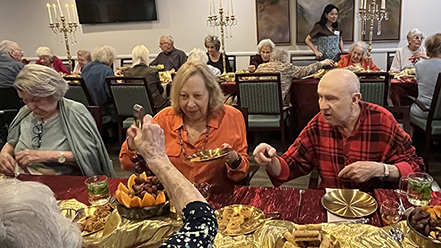
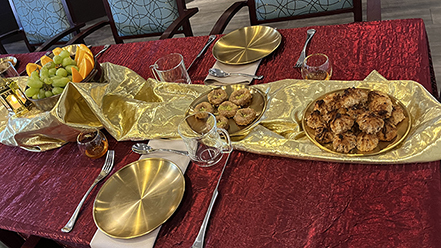
The Newman Building's Passover Seder offered an interactive experience of the Exodus through readings, songs, and food along with a traditional Israeli dance performance
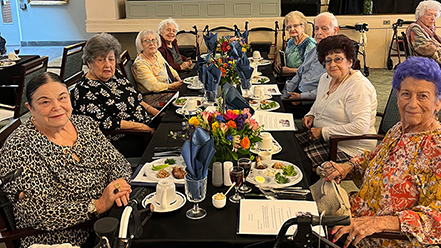
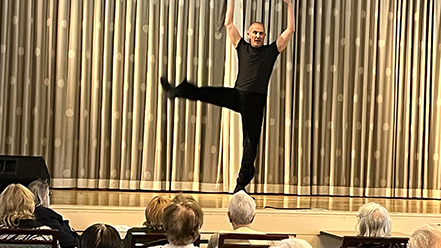
These plates from the Goldenberg-Ziman Special Care Center event showcase the dining staff’s ability to thoughtfully create individualized Seder plates, ensuring the participation and enjoyment of all those at LAJH
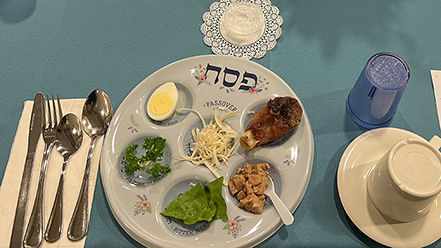
At the Joyce Eisenberg-Keefer Medical Center, residents showcased a heartfelt Passover performance. They wrote and directed the play themselves, bringing the timeless story of Passover to life with creativity, spirit, and meaning
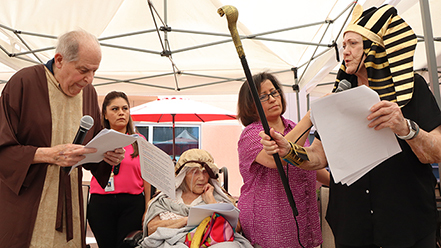
Grancell Village residents took part in the traditional biur chametz, the symbolic burning of leaven, before the Passover Seder
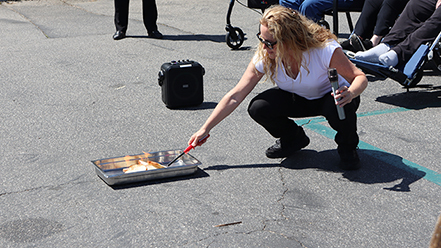
Our diligent dietary team, joined by Chief Mission Officer, Rabbi Karen Bender, and overseen by a representative of our Mashgiach, Yehudah Bukspan, engaged in the process of kashering the areas dedicated to culinary endeavors for Passover. This procedure is designed to ensure all aspects of the kitchen are kosher for Passover, employing a thorough cleansing regimen that utilizes boiling water on every surface and utensil, as well as eliminating all leaven such as yeast and baking powder.
